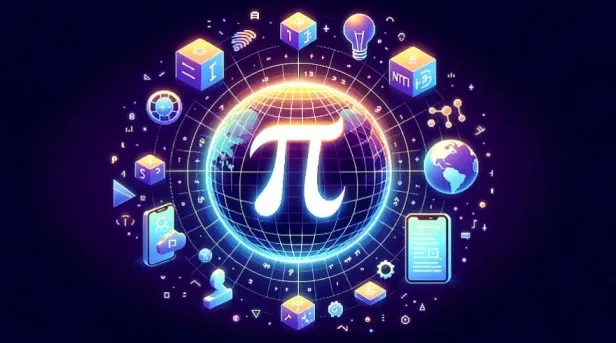Table of Contents
- Introduction to Pi123 and its significance
- The History of Pi and its Mathematical Significance
- Understanding the Basics of Pi123
- How Pi123 Can Be Used in Everyday Life
- The Benefits of Learning and Using Pi123
- Real-Life Examples of the Impact of Pi123
- Conclusion: Embracing the Power of Pi123 in Education and Beyond
Introduction to Pi123 and its significance

In mathematics, few constants capture our imagination quite like pi. Now, imagine elevating that concept to a new level with pi123. Although one may need to become more familiar with this exciting term, it has excellent prospects of improving math comprehension and relevance in real life.
Pi123 is not simply a mathematical oddity; it is an aid that links theoretical constructs to a pragmatic situation.
As we delve into this fascinating topic, we’ll unpack the history of pi and how insights from pi123 can transform our approach to learning and application. Join us as we explore how embracing pi123 can unlock new ways for students and enthusiasts alike to relate to numbers—and perhaps even make calculations less daunting!
The History of Pi and its Mathematical Significance
The number pi is as enjoyable as its history, which is largely unknown. For instance, its first known approximation was over four thousand years ago, when the ancient Egyptian civilization estimated its value to be around (3 ^\frac{1}{8}) and the Babylonians at (3.16) – an exciting snapshot in the history of mathematics.
A few centuries later, Archimedes of Syracuse laid the foundations of a strident understanding of pi. This Greek mathematician pioneered the expanding understanding, extending it to between (3.1408) and (3.1429) using inscribed and circumscribed polygons.
By the fifth century, praise was sung toward Chinese mathematicians like Zu Chongzhi, who figured out (\frac{355}{113}) to be an impressive approximation of pi.
With the rise of calculus in the 17th century, it evolved substantially further. Similarly to Newton, Leibnitz, and Euler, Pi became an astonishing constant and the true magic of mathematics, making it one of the crucial players within geometry and, consequently, many other disciplines.
Understanding the Basics of Pi123
Pi123 is a fascinating concept based on the well-known mathematical constant, pi. At its core, Pi123 represents an accessible way to grasp the complexities of circular mathematics.
Understanding this idea starts with recognizing how pi—approximately 3.14—plays a crucial role in geometry. It relates to circles by connecting the circumference and diameter.
Pi123 simplifies these principles, making it easier for students and enthusiasts alike to engage with math concepts practically.
Instead of getting lost in lengthy calculations or abstract theories, learners can focus on applying Pi123 in real-world situations. This approach demystifies mathematics and shows its relevance beyond textbooks.
Pi123 knew that traditional learning would never be completely successful as it came with many constraints. So, they decided to offer advancements in mathematics without any fear or frustration of failure, which is common in traditional methods. The focus is on developing fundamental motivation and engaging fundamental skills.
How Pi123 Can Be Used in Everyday Life
Pi123 is more than just a mathematical concept. It can seamlessly integrate into daily activities, making calculations more straightforward and intuitive.
For instance, understanding Pi123 helps measure circular cake pans or pizza sizes accurately when baking. Instead of guessing dimensions, you can apply this knowledge to ensure perfect portions every time.
In-home improvement projects, Pi123 assists with designing round tables or calculating the area for circular rugs. This practical application turns abstract math into tangible outcomes in your living space.
Even in fitness routines, using Pi123 can enhance workout planning. For instance, it is useful to calculate circumferences when keeping track of how many laps one runs around a track or how far one has traveled on a bike.
Using Pi123 allows a profound transformation of self and enriches life by turning tedious chores into exciting challenges to be solved.
The Benefits of Learning and Using Pi123
Learning and using pi123 offers numerous benefits that extend beyond the classroom. It improves the ability to face challenges that mobilize individuals to deliberate on mathematical issues.
When learners such as Kristina understand and, even better, appreciate the value of pi123, they come to love geometry and, more so, its relevance in practice.
This understanding can lead to greater confidence when tackling complex equations or projects.
Moreover, incorporating pi123 into daily activities fosters creativity in fields such as design and engineering. Professionals often rely on these principles to optimize structures or create innovative solutions.
Engaging with this concept also promotes collaboration among peers. Group work centered around pi123 encourages discussion and sharing of ideas, which can enrich learning experiences.
Embracing pi123 strengthens analytical thinking—a vital skill in today’s data-driven world—making it invaluable across various disciplines.
Real-Life Examples of the Impact of Pi123
Pi123 has made significant waves in various fields. In engineering, it helps architects design stable structures by ensuring accurate measurements for curves and circles. Using Pi123 simplifies complex calculations, saving time and resources.
In technology, programmers leverage pi123 to optimize algorithms that rely on circular data processing. This efficiency leads to smoother software performance and enhanced user experiences.
Even in environmental science, pi123 plays a role. Researchers use it to model natural phenomena involving spherical shapes—like weather patterns or ocean currents—leading to more effective strategies for resource management.
Moreover, educators utilize pi123 as a teaching tool. By incorporating real-world applications into lessons, students engage better with mathematical concepts while appreciating their relevance beyond textbooks.
Conclusion: Embracing the Power of Pi123 in Education and Beyond
Embracing the power of Pi123 opens up new avenues for learning and application in our everyday lives. This unique framework enhances our understanding of mathematics and enriches various fields, from engineering to art. Integrating Pi123 into educational curricula prepares students for a world increasingly relying on quantitative reasoning.
Through real-life examples and practical applications, it becomes clear how impactful Pi123 can be. Whether calculating dimensions in architecture or optimizing space in design, the relevance is undeniable. The benefits extend beyond academics; they foster critical thinking and problem-solving skills essential for success.
As we delve deeper into its significance, it’s evident that embracing concepts like Pi123 can transform education and personal development. Encouraging curiosity around this topic will inspire generations to explore math enthusiastically rather than fearfully.
Harnessing the principles behind Pi123 allows us to appreciate the beauty of mathematics as part of daily life. Engaging with these ideas cultivates a richer understanding while empowering individuals to apply their knowledge creatively across diverse disciplines. Let’s continue championing such innovative approaches in both classrooms and broader communities—unlocking endless possibilities through the lens of numbers.


